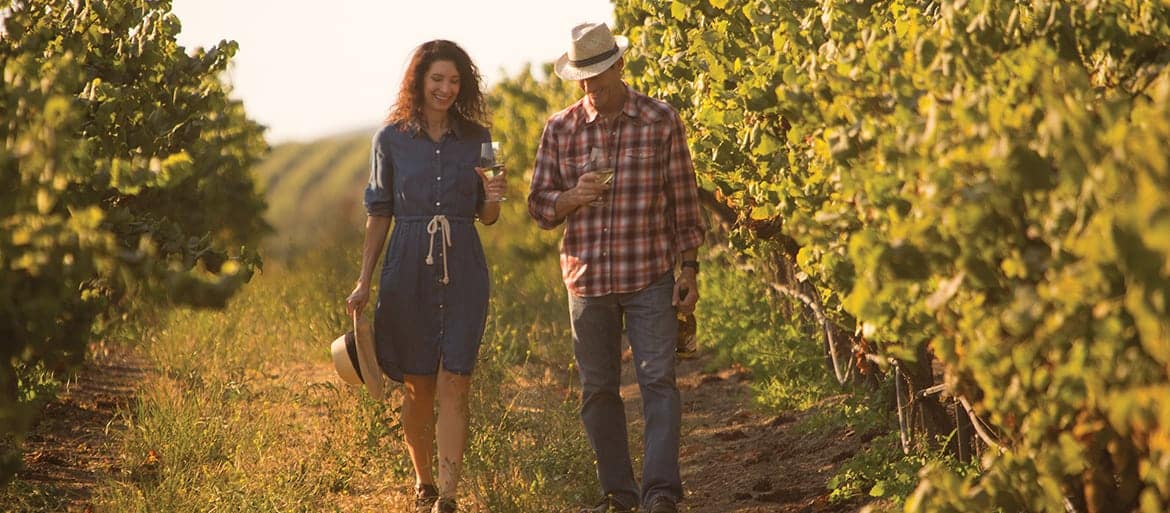At the base of the San Rafael Mountains in the heart of the Santa Maria Valley Wine Country and on the northernmost edge of Santa Barbara County, California lies the famous Bien Nacido Vineyards. Planted by the Miller family in 1969, Bien Nacido has become one of America’s most well-known sources of Chardonnay, Pinot Noir, and Syrah thanks to the Miller family’s unwavering commitment to provide world-class fruit to some of the West Coast’s most celebrated wineries.
I started managing the Bien Nacido Vineyards fifteen years ago. Since then I have worked with more than 40 wineries throughout the season in a joint effort to continue to produce the finest examples of wines this great valley is capable of. Managing one of America’s most well-known vineyards has been hugely rewarding but farming, of course, is not without its challenges and Coastal California wine grapes are no exception. From irregular weather events to regulatory restrictions, and the ever-present threat of diseases and pests, growing world-class grapes has never been a walk in the park. While these issues have been always been a part of the grape grower’s dialogue, growers in California face two new looming challenges: labor and water.
Labor
Traditionally Bien Nacido has enjoyed a stable, highly-skilled, year-round worker base but in recent years we have seen increased scarcity, especially in the late spring and early summer. Skilled agricultural talent is in strong demand not only by vineyards, but increasingly in our flourishing local berry industry. Steady strawberry production, long-established in this temperate, coastal valley, has been joined by increased raspberry, blueberry and, to a lesser extent, blackberry acreage. Raspberries and Blueberries especially thrive in our cool weather and light alluvial and marine soils, and expert growers from the Oxnard and Watsonville areas have established a strong foothold here in Santa Maria.
Increased competition for a slowly shrinking labor pool has seen peak wages increase by as much as 25 percent in the last four years. Unofficial reports on early H2A (temporary agricultural workers program) efforts have been less than encouraging, but still hold interest for some as a possible solution to this multi-faceted challenge. Although we have taken strides to increase efficiency through carefully chosen mechanization practices, labor continues to play a major role in our operation.
Water
Compared to many crops, grapes are not a major user of water. However, to achieve sufficient yield and quality, supplemental irrigation is generally thought to be necessary in most years (although there is increased discussion about the practicality of “dry-farming” coastal vineyards, a common practice in most of Europe. The biggest difference between the two areas is that California summers are typically dry and European vineyards rely on this in-season moisture to ripen their crops). We supplement our annual average 12” of rainfall (8” this year and 4” in 2014) with between 4”-6” during the growing season, depending on soil texture, rootstock and timing/quantity of rain.
Growers in Santa Maria area have traditionally relied on abundant aquifer-based well water. However, static and pumping water levels have dropped for us over the last two years by between 5-15% on our deeper wells, with production quantity seeing a similar decrease. Shallower wells that rely primarily on seasonal precipitation have been affected even more in both quantity and quality. Although all would love to simply see more rain, pre-plant soil amendments, irrigation conservation based on sap flow sensors, as well as introducing more drought-tolerant varieties and/or rootstock are some of the topics being discussed as potential responses to this pressing dilemma.
Challenges aside, California’s coastal wine grape industry is in a solid place. The demand for premium Central Coast wines and the grapes that produce them is strong. More long-term efforts are being made to establish our area as a significant player on the world stage and, thanks to the efforts of established veterans and ambitious upstarts, wine quality is unquestionably at an all-time high.
